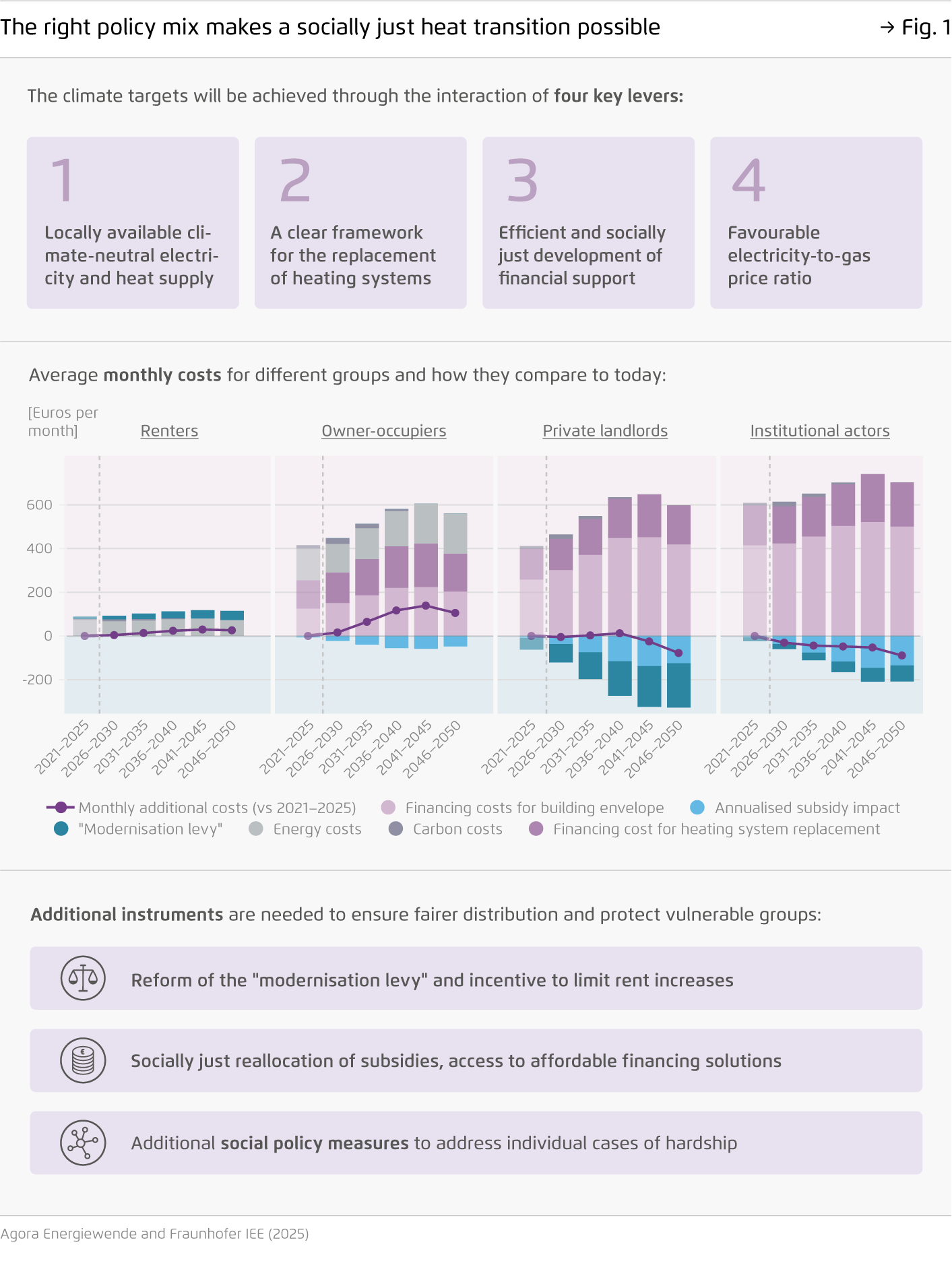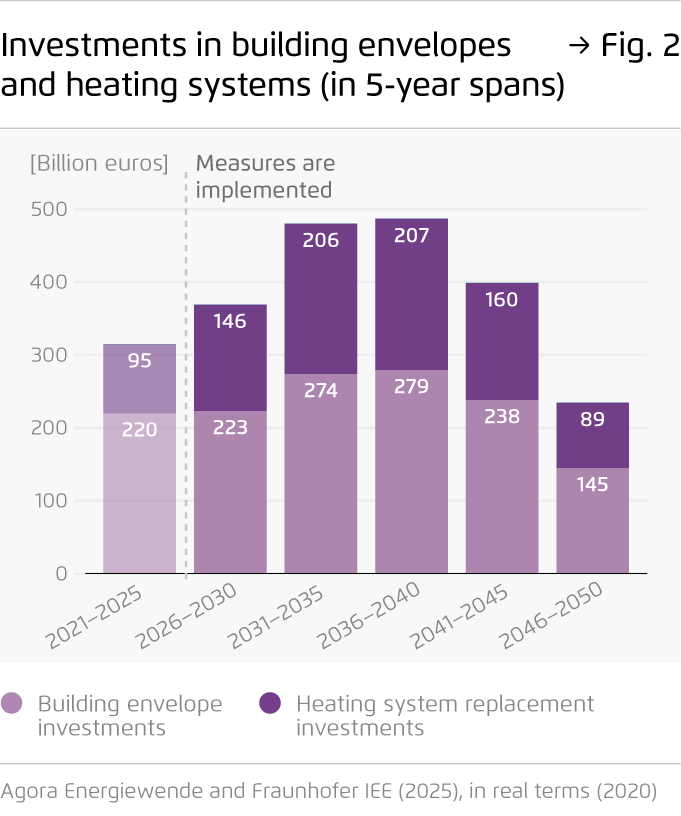-
Germany’s heat transition is achievable without exacerbating social tensions in the housing market.
The technical options for climate-neutral heating have never been better. Supporting homeowners in making timely investments while protecting renters from high costs will be key to ensuring the climate-neutral modernisation of buildings is a success.
-
A balanced policy mix is needed now to enable the transition to climate-neutral buildings by 2045.
A key requirement is the reliable expansion of heat and electricity distribution networks, along with a gradual withdrawal from gas distribution networks. To scale up climate-friendly technologies, clear renewable energy requirements for heating system replacements, targeted subsidies and a cost advantage for electricity over gas are essential. This would enable nearly seven million climate-friendly heating systems to be installed in Germany by 2030.
-
Renters and low-income homeowners require additional support.
Subsidies should be reallocated to flow specifically to households with limited capital and inefficient buildings, with subsidies covering up to nearly 100 percent of costs for the lowest-income groups. At the same time, rent increases must be curbed, for example by granting landlords a bonus in exchange for passing on lower modernisation costs onto tenants. In addition, households facing hardship will require targeted social support.
-
With swift action, the bulk of investments needed for the heat transition in Germany can be realised by 2040 – while keeping heating costs stable.
With the proposed policy mix, emissions from buildings could be reduced to zero by 2045 and heating costs maintained at today’s level. In an increasingly complex geopolitical environment, this would make consumers less dependent of fossil energy imports and contribute to a more resilient energy supply.
This content is also available in: German
A socially just heat transition
How residential buildings in Germany can become climate neutral

Preface
The heat transition is bringing climate action directly into people’s homes. In Germany, most households still rely on fossil fuels for heating – often in buildings in need of renovation. As a result, the country is falling short of its climate targets in the buildings sector. To change this, millions of people will need to invest in climate-friendly heating systems and improved insulation. But for many homeowners, these upgrades are simply unaffordable, and renters often have no say in the matter. They all risk facing even more pressure in an already tight housing market.
So how can we ensure the heat transition succeeds without placing additional social burdens on people? This study uses a simulation to explore how different policy tools affect the decisions of key social groups. The result: with the right policy mix, a socially fair heat transition is possible. The technical conditions have never been better. The right price signals, a clear regulatory framework and targeted support programmes can enable all households to make the switch. The initial investment phase will be followed by long-term relief.
But the study also makes clear: especially for homeowners and renters in lower income groups, further reforms are needed – reforms that shield them from added costs and strengthen public support for climate policy.
Key findings
Bibliographical data
Downloads
-
Summary
pdf 580 KB
A socially just heat transition
How residential buildings in Germany can become climate neutral
All figures in this publication
The right policy mix makes a socially just heat transition possible
Figure 1 from A socially just heat transition on page 5

Investments in building envelopes and heating systems (in 5-year spans)
Figure 2 from A socially just heat transition on page 6



